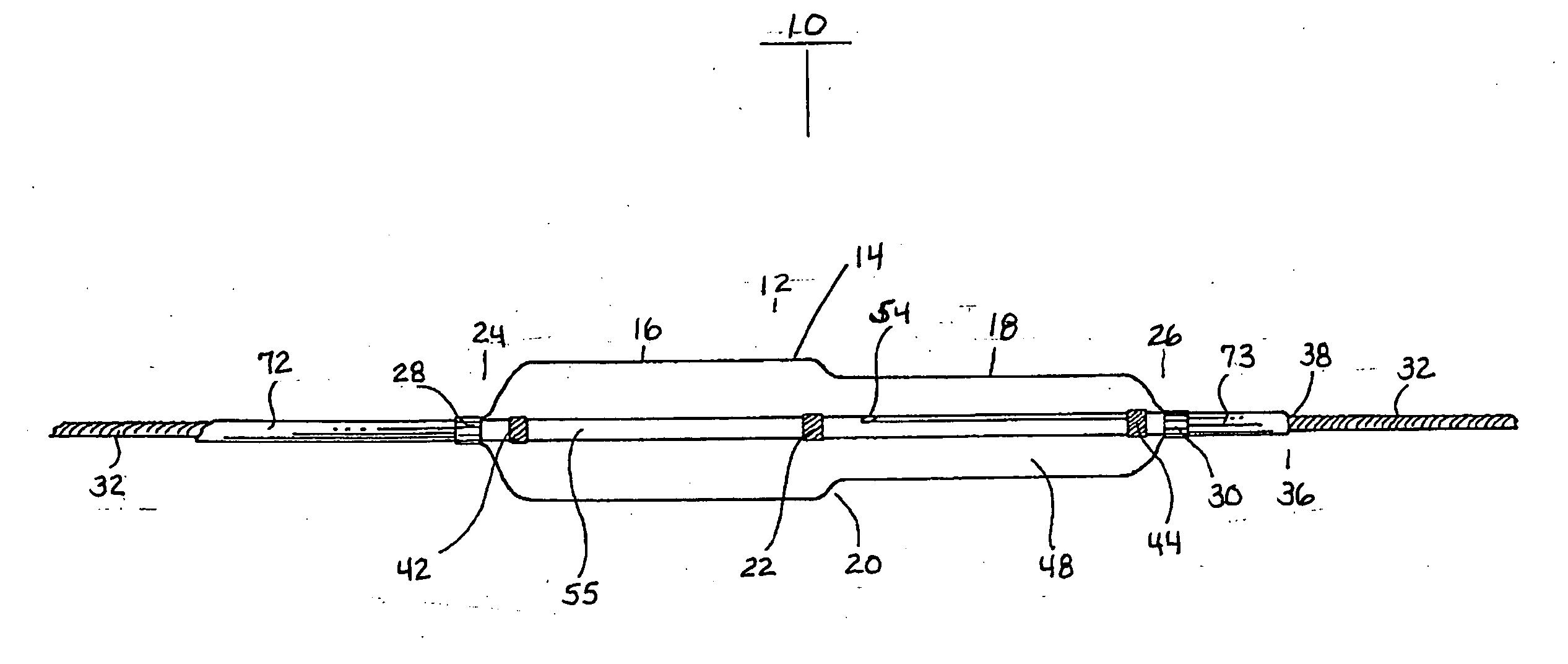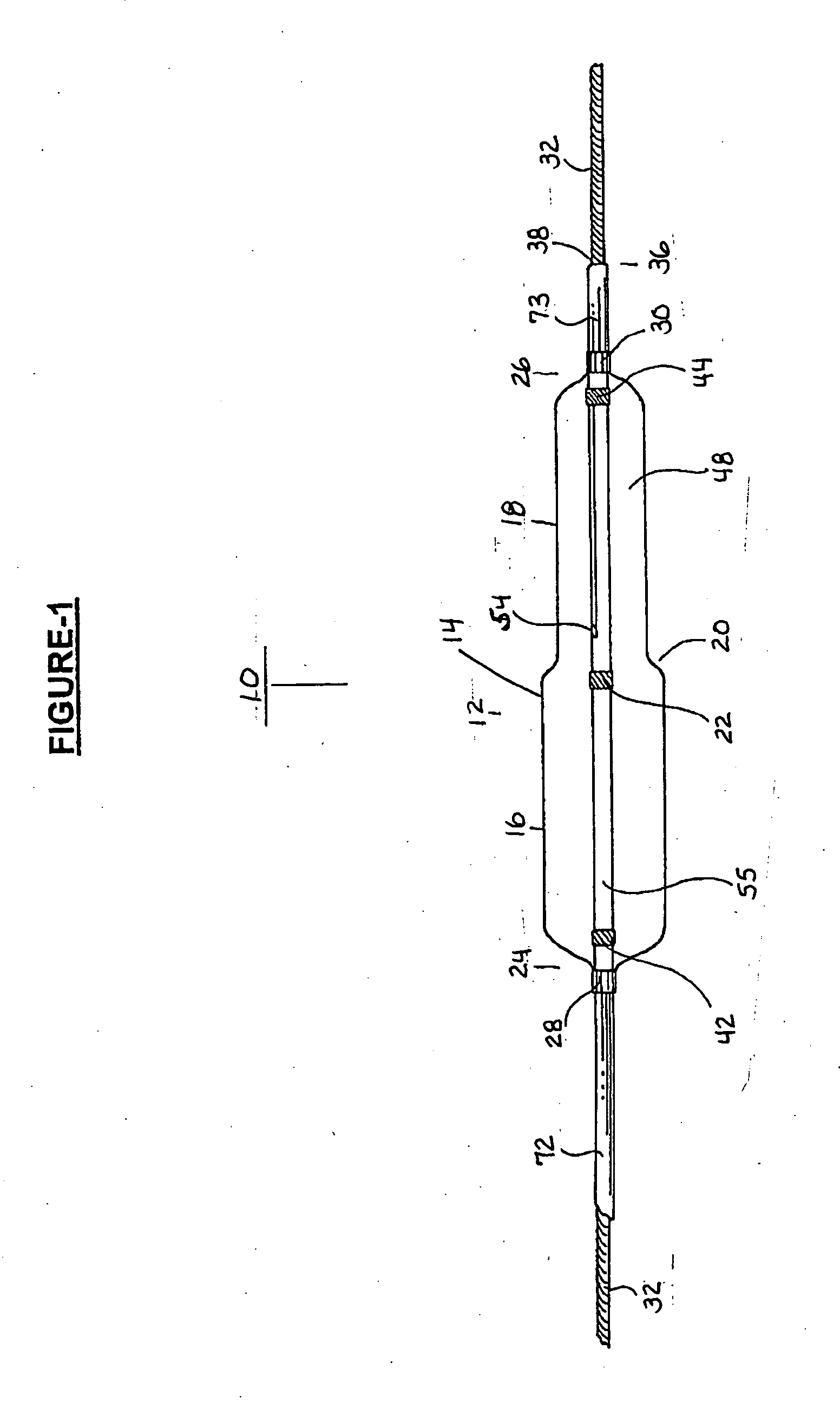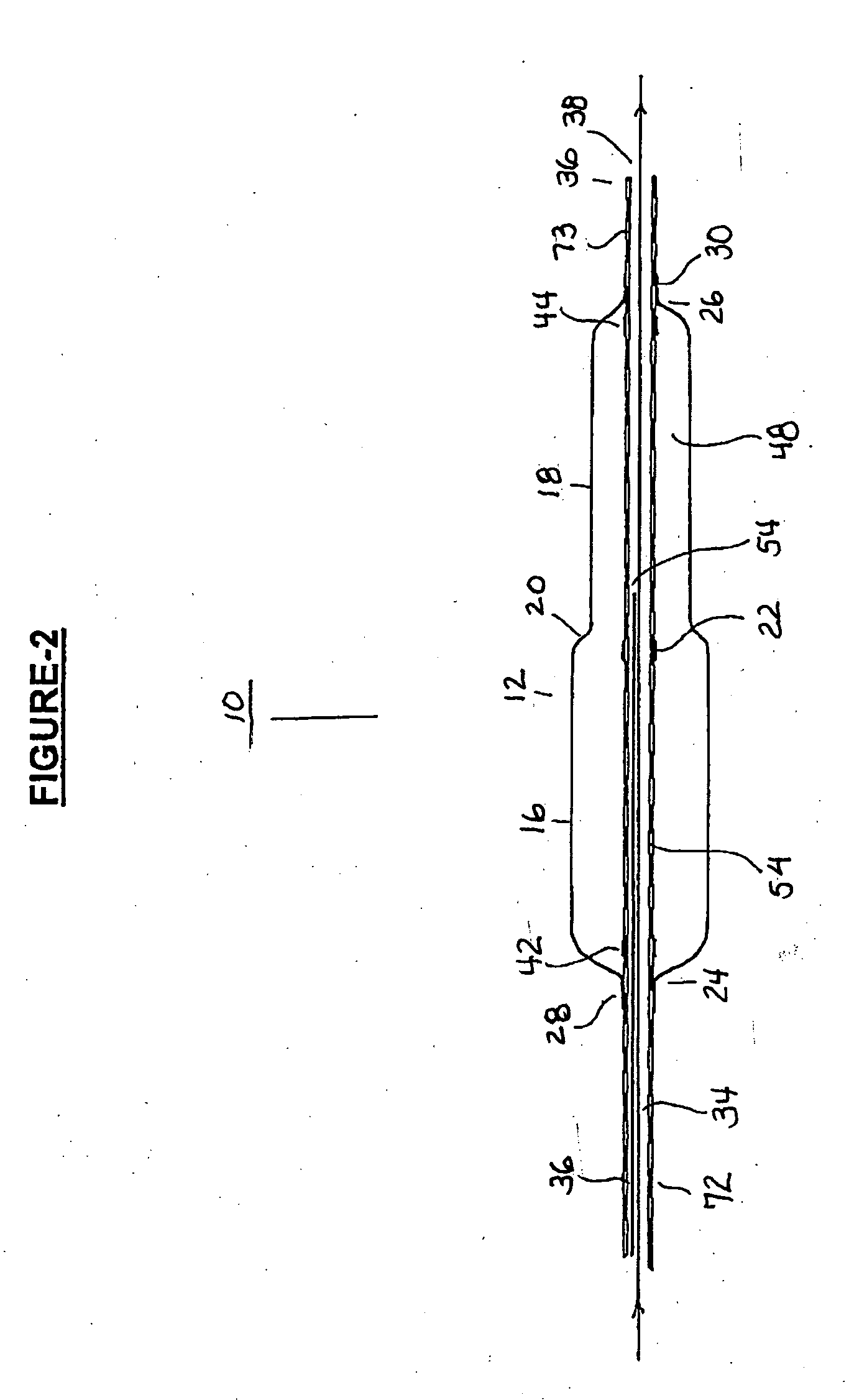Two-step/dual-diameter balloon angioplasty catheter for bifurcation and side-branch vascular anatomy
a vascular anatomy and bifurcation technology, applied in the field of percutaneous balloon coronary angioplasty and coronary stent delivery devices and methods, can solve the problems of inconvenient and costly use of brachytherapy, increased costs, and complex and difficult optimal adoption of stents, so as to reduce vessel damage, reduce vessel damage, and reduce the effect of vessel damag
- Summary
- Abstract
- Description
- Claims
- Application Information
AI Technical Summary
Benefits of technology
Problems solved by technology
Method used
Image
Examples
Embodiment Construction
[0025] Referring to FIG. 1, one embodiment of a balloon catheter 10 according to the present invention will now be described. The balloon catheter 10 includes a balloon 12 positioned at a distal portion of catheter shaft 72 (see FIG. 6). The balloon 12 has a balloon outer skin 14. In this embodiment, balloon 12 may have a first section 16 with a first average diameter and second section 18 with a second average diameter that is smaller than first average diameter. First and second sections 16 and 18 are coupled by a transition section 20 that has a geometry and is sized to reduce vessel damage when positioned at a point of vessel bifurcation.
[0026] Balloon catheter 10 is particularly suited for use in stenting bifurcation or side-branch origin lesions. Balloon catheter 10 is configured to provide proper and / or successfully implantation of a stent at bifurcation or side-branching origin lesions. Coronary bifurcations have variable sets of complex anatomic characteristics that are me...
PUM
 Login to View More
Login to View More Abstract
Description
Claims
Application Information
 Login to View More
Login to View More - R&D
- Intellectual Property
- Life Sciences
- Materials
- Tech Scout
- Unparalleled Data Quality
- Higher Quality Content
- 60% Fewer Hallucinations
Browse by: Latest US Patents, China's latest patents, Technical Efficacy Thesaurus, Application Domain, Technology Topic, Popular Technical Reports.
© 2025 PatSnap. All rights reserved.Legal|Privacy policy|Modern Slavery Act Transparency Statement|Sitemap|About US| Contact US: help@patsnap.com



